Healthier You NHS Diabetic programme - Course 2
Kathy reported on her start of this course and now can update you on how the course has progressed. The Healthier You NHS Diabetes Prevention Programme, also known as the Healthier You programme. - Sunderland City Council
Session Four was all about healthy eating and how to combine healthy foods into your meals. A Lot of this I was already aware of, but planning meals was also discussed.
Session Five was all about fats in your diet. Fats contain double the calories compared to carbohydrates or protein. Tips were given on how to use fats wisely, and the difference between healthy fats and unhealthy fats, and how you can swap them to make a difference. Labelling of foods was also discussed in this session.
Session 6 was about snacks. Because food causes a blood sugar spike it is important to try and prevent this spike from occurring. Being hungry before your next meal is a problem that needs to be addressed as most snacks can cause problems with blood sugar increasing. Eating low carb and sugar free snacks were identified and discussed.
Session Seven was about Knowing your Triggers, what ae your danger signs that cause you to eat the wrong foods. These triggers can be external or internal factors that prevent us from changing our lifestyle and improve our outcomes. We covered motivation or lack of and identifying the difference between hunger or craving.
A few members of the group have had their yearly blood check and most of them have been successful in reducing their readings. I was not one of them. I had my yearly blood test and mine stayed at the same level. I gave this some thought, and decided to use the blood sugar monitor, which I bought last year, more regularly. I did this for a couple of weeks but not in a methodical way. I downloaded the app that Syncs with the monitor to my phone and used it for a couple of days to identify when my readings went up or down.
I was taking regular readings: one before breakfast, one two hours after lunch, one before my evening meal and one before bedtime. Being aware of what you are eating is a great motivator. The first few day's readings soon gave me an insight why my levels were not going down. I tested before lunch, after a fasting test, before breakfast, my readings often went down so that meant my breakfast was not causing any concern. The reading after lunch was always higher. This to me meant it was my lunch which was causing problems. As I usually have a sandwich or soup and a roll, I ascertained it was the carbs in the bread that was giving me a higher reading. My reading before my evening meal was often lower that the reading 2 hours after lunch. I also found that if I had a high carb evening meal, my bed reading before bed could also be high. The next morning it could still be higher than usual.
I then started using the app they way it was designed to take regular tests and at the end of two weeks received a report which gave me a reduction of two points. I know this is not as good as aHbA1c test taken by your GP but it has given me a bench mark for me to monitor myself. It is like weighing yourself on a regular basis, it makes you aware of what you are eating. As the test strips are quite expensive to use, they cost between 20p and 40p each, depending on where you buy them, you get 50 in a box, which only last a month. I will not be using them very often. But if I am concerned, I do now have a method of monitoring my blood sugars.
Most of the group feel that the lack of blood sugar monitoring is letting this course down. If you only get tested once a year and the course lasts 9 months, you are unaware of how you are doing, until your next yearly test.
To find out in your area contact
North East and North Cumbria | Reed Wellbeing | info@reedmomenta.co.uk | 0800 092 1191 | reedwellbeing.com/healthieryou




